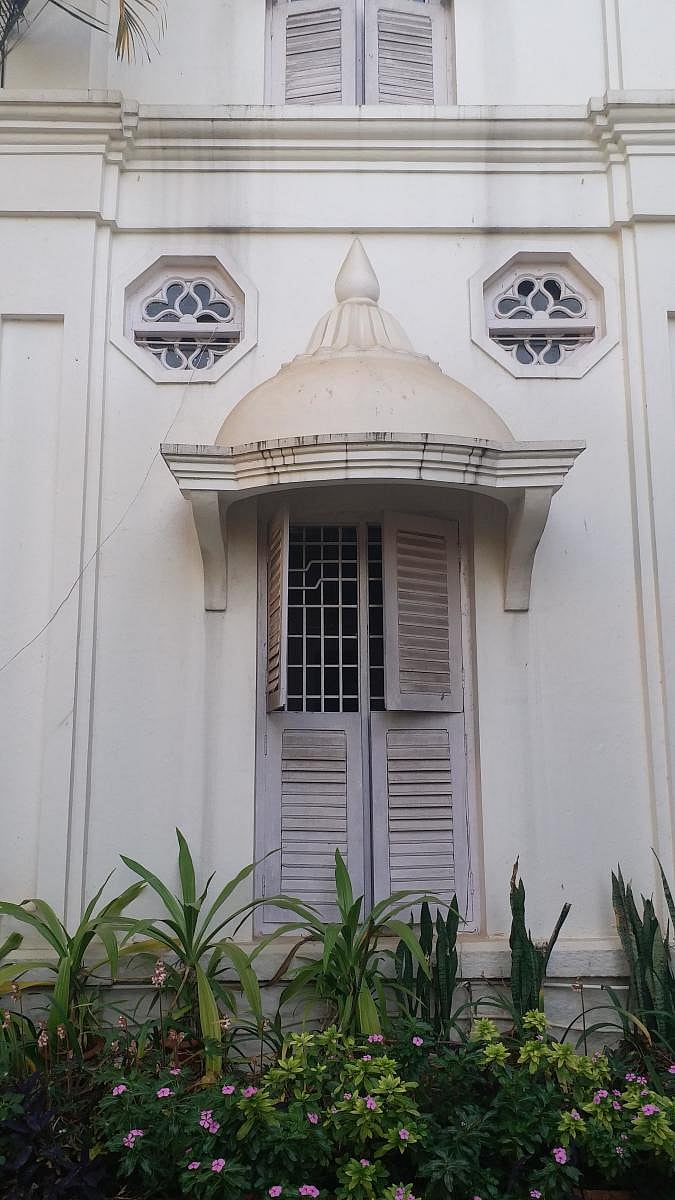

Aurobindo Ghose, the philosopher, was born exactly 75 years before India became independent.
As a run up to his 150th birth anniversary on August 15 next year, the Sri Aurobindo Society in Bengaluru has a year of events planned, to celebrate the life and message of this fiery nationalist leader who later became, and still is, a spiritual leader to millions around the world.
The programmes will take place in the Aurobindo Bhavan, a regally beautiful house set in a large garden and facing the Ulsoor lake.
Since when it was built in 1905, this stately pile has been a family home, a reluctant ruler’s palace, and is now a spiritual centre.
Its early history is slightly hazy. According to one family’s lore, the building was constructed by a son or grandson of Gangadhar Chetty, a wealthy merchant and contractor in the erstwhile Civil and Military (C and M) Station of Bangalore, and after whom the road itself is named.
Chetty probably sold the house to T Vijaya Raghavulu Naidu, a respected officer in the C and M Station’s administration. According to Naidu’s great-granddaughter Lalitha Jayakumar, her grandfather T Abboy Naidu then sold the house when he required funds for his daughter’s wedding.
The house was bought by Colonel Jai Prithvi Bahadur Singh, the Raja of Bajhang, a principality in Nepal. Jai Prithvi was no ordinary dynast. He was the son-in-law of the Prime Minister Chandra Shumsher Rana, then the most powerful man in Nepal.
He was also a writer, spiritual seeker, educationist and reformer. He published several books for students and general readers on varied topics, started the publication of one of Nepal’s earliest newspapers, undertook land reform and established the first school for commoners in Bajhang.
In 1916, Jai Prithvi abdicated in favour of his father and moved with his family to Nainital. He bought the house on Gangadhar Chetty Road in 1921.
His new home, renamed Jaya Bhavan, became the centre of much of his spiritual work. In 1928, he set up the Humanistic Club. The weekly meetings held in Jaya Bhavan were often addressed by luminaries including Sir M Visvesvaraya.
As a foreign national, especially one who fraternised with inquirers and intellectuals, the British Raj naturally kept tabs on him, suspecting him of espionage. In 1932, when the Mysore State made him a state subject, the British government fretted about the retired Raja, describing the peace-loving Jai Prithvi as “a thoroughly undesirable individual.” In May 1940, his movements were curtailed. He died on September 15, 1940.
Jaya Bhavan was home to other Nepali royals, including Jai Prithvi’s brothers-in-law Mohan Shamsher who died in Bengaluru in 1967, and Krishna Shamsher, who came here in the 1960s, fleeing political persecution. He died in 1977.
Two years later, his wife donated the bungalow to the Sri Aurobindo Society, and it remains with them still.
“The double-storeyed house has a symmetrical layout, planned around a central nave-like corridor with rooms on either side,” explains Swathy Subramanian, conservation architect, INTACH.
Several of these rooms are circular. “The cynosure is the entrance porch with its large semi-circular windows and topped with a classical balcony.” Old photographs establish that this very striking circular room was an addition, possibly from Jai Prithvi’s times.
“The structure is maintained fairly well,” says Subramanian. “It retains the architectural authenticity and integrity of its colonial and vernacular features, such as the Madras terrace and jack arch roofs, classical columns and the original mosaic flooring.”
A room with wooden flooring is popularly thought to have been a ballroom.
Several delightful details draw your eye, including different kinds of chajjas or sunshades. Especially unusual are the domical chajjas over some windows. There are also ornamental parapets, cornices, domes, octagonal ventilators with unusual floral-patterned joinery, and semi-circular windows with louvered shutters.
Integral to the charm of the Aurobindo Bhavan is its vast garden filled with a profusion of plants and numerous grand old trees. Small paths thread through the well-tended garden, leading to a well here, a pond filled with frogs and lotuses there. The mornings and evenings are filled with birdsong.
A graceful old bungalow, a lake, and a tranquil garden — the Aurobindo Bhavan is a reminder of a bygone genteel Bengaluru.
(The writer is the author of ‘Discovering Bengaluru’ and the Convenor of INTACH Bengaluru Chapter.)